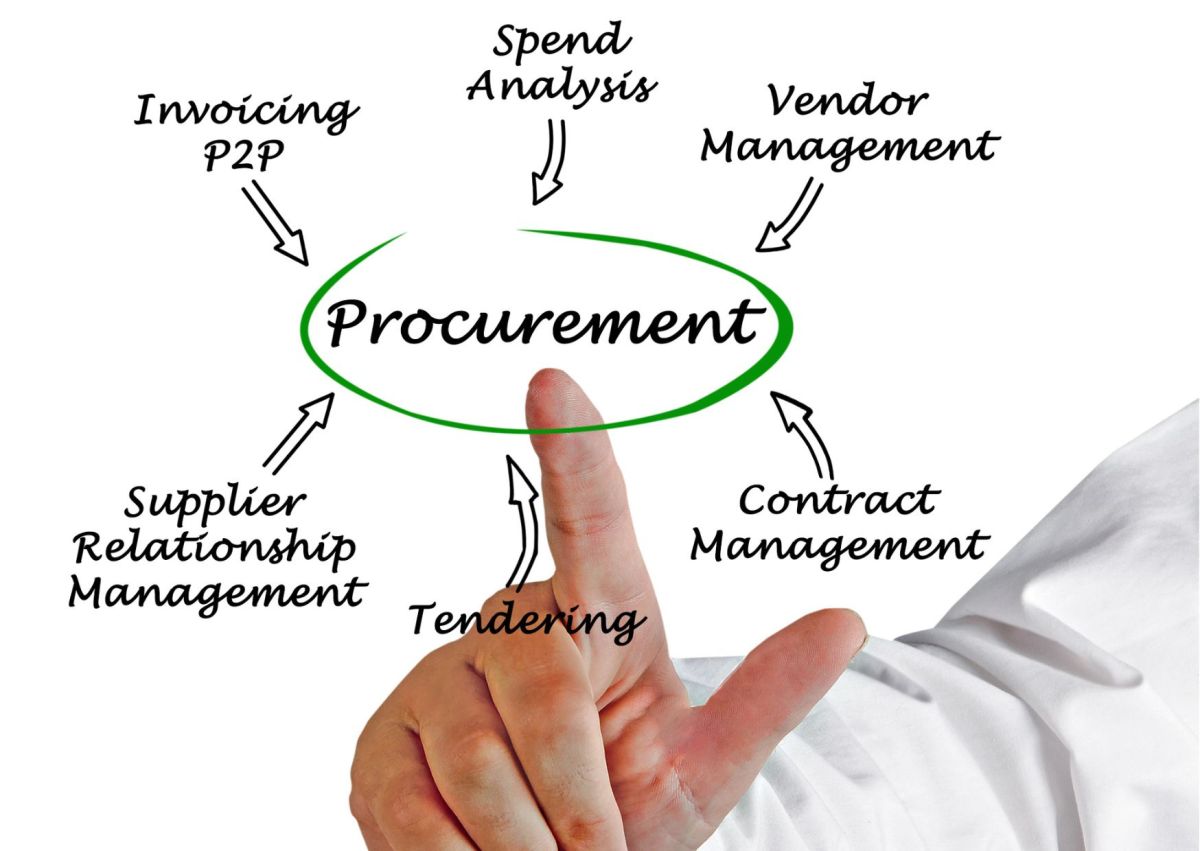
In the sophisticated landscape of modern business, where competition is fierce, and resources are limited, procurement serves as a pivotal function that can either drive a company’s success or pave the way for its downfall. Unfortunately, in pursuing growth and profitability, a dark shadow looms over this critical process in the form of procurement fraud. This insidious phenomenon not only undermines the integrity of businesses but also drains their financial resources, making it imperative for organizations to remain vigilant and proactive in combating this menace.
Procurement fraud can be defined as deliberate manipulation, misrepresentation, or abuse of the procurement process for personal gain. It involves various fraudulent activities aimed at obtaining goods, services, or funds from an organization through deceptive means. Over time, several recurring cases and models of procurement fraud have emerged, shedding light on the vulnerabilities that need to be addressed.
Common Cases and Models
Bid Rigging: In this model, colluding vendors manipulate the bidding process by agreeing in advance on the winner, price, or terms of a contract. This artificially inflates prices and deprives the company of competitive options. Bid rigging operates like a well-orchestrated symphony, with the fraudsters playing distinct roles to achieve a harmonious outcome that benefits them at the expense of the victimized organization. The key players in this elaborate scheme often include the Ringleader – The mastermind behind the collusion, orchestrating the plan and identifying potential participants; preferred Supplier(s) – The chosen participant(s) who are assured of winning the bid, usually with inflated prices. Cover Bidders – These suppliers submit intentionally uncompetitive bids, providing the illusion of a fair process while ensuring the preferred supplier wins. Rotating Winner – A rotation system where each participating supplier takes turns being the designated winner, ensuring a veneer of fairness.
Red Flags and Warning Signs
Unmasking bid rigging requires a discerning eye and a commitment to vigilance. While the collusion may be concealed with great care, certain red flags and warning signs may provide crucial hints of fraudulent activities.
Consistently High Bids: If bids from particular suppliers consistently come in higher than expected, it could indicate a coordinated effort to inflate prices.
Limited Competition: A pattern of only a few suppliers consistently bidding on contracts may suggest an attempt to control the bidding process.
Unusual Bid Patterns: Rapid alternation of winning bids among a small group of suppliers, coupled with irregular pricing trends, can raise suspicions.
Bid Irregularities: Excessive late bid withdrawals, vague or incomplete bids, or suppliers frequently winning without competitive offers can be telltale signs.
Impact on Businesses and Solutions
The consequences of bid rigging are far-reaching and can have a lasting impact on businesses and industries. Companies fall victim to artificially inflated prices, leading to increased costs and reduced profitability. Moreover, the erosion of trust and integrity can tarnish a company’s reputation, damaging relationships with customers, partners, and stakeholders.
To counter bid rigging effectively, businesses must prioritize transparency, accountability, and robust procurement practices by actively encouraging and maintaining a diverse pool of suppliers to foster competition and minimize the potential for collusion, engage in open communication with suppliers, and conduct pre-bid meetings to clarify expectations and address any concerns, introduce mechanisms that randomly select bidders for different projects, making it harder for colluding suppliers to predict outcomes. Leverage advanced data analytics tools to detect abnormal bidding patterns and uncover potential bid-rigging schemes.
Bid rigging exemplifies the cunning and resourceful nature of procurement fraud. By understanding its mechanics, recognizing warning signs, and implementing preventive measures, organizations can shield themselves from the detrimental effects of this deceptive practice. As businesses continue to navigate the complex procurement world, the ongoing battle against bid rigging remains essential to fostering fair competition, protecting financial resources, and upholding the principles of integrity and trust that underpin a thriving marketplace.
Ghost Suppliers: Fraudsters create fictitious suppliers, invoices, and purchase orders to divert funds into their pockets. These phantom transactions often go unnoticed amidst the vast stream of legitimate activities. In the intricate dance of procurement, where suppliers and buyers waltz to pursue business success, a shadowy figure often lurks in the background, threatening to disrupt the harmony. These are the infamous „ghost suppliers,“ a deceptive presence that can ruin an organization’s finances and integrity. Ghost suppliers represent a form of procurement fraud where fictitious entities or individuals are created to orchestrate fraudulent transactions, siphoning off funds meant for legitimate goods or services. Unraveling the enigma of ghost suppliers is crucial for businesses seeking to secure their procurement processes and fortify their financial defenses.
The Phantom’s Blueprint
Ghost suppliers materialize through a carefully orchestrated blueprint that seeks to exploit gaps in the procurement process and exploit weaknesses in internal controls. The modus operandi of this fraudulent scheme often involves fabricated identities (fraudsters create fictional suppliers, complete with fake names, addresses, and contact information, often resembling legitimate entities to evade suspicion), fictitious invoices (forged invoices, purchase orders, and delivery receipts are crafted to create the illusion of legitimate transactions, making it difficult to distinguish between real and fraudulent activities), complicit insiders, (in some cases, the fraud may involve collusion between internal employees and external actors, further complicating detection), laundered payments, (funds intended for legitimate suppliers are diverted to ghost suppliers’ accounts through convoluted payment channels, making it challenging to trace the money trail).
Signs of a Haunting
Detecting the presence of ghost suppliers requires a keen eye and a commitment to due diligence. Several telltale signs may serve as indicators of their surreptitious presence:
Inconsistent Documentation: Discrepancies between invoices, delivery receipts, and purchase orders could hint at the involvement of ghost suppliers.
Lack of Contact: Difficulty establishing communication with a purported supplier or receiving evasive responses could be a sign of a phantom entity.
Unusual Payment Channels: Payments routed through unverified or irregular channels, particularly to unfamiliar bank accounts, should raise suspicions.
Single-Transaction Suppliers: Suppliers with a limited history of transactions or sudden spikes in activity may warrant closer scrutiny.
Defending Against the Unseen Threat
Shielding an organization from the clutches of ghost suppliers requires a multi-faceted approach that encompasses both prevention and detection: Thoroughly vet and verify new suppliers by conducting background checks, verifying contact information, and assessing their legitimacy. Conduct routine audits of procurement processes, invoices, and payments to identify anomalies or irregularities. Utilize advanced data analytics tools to scrutinize procurement data for unusual patterns that may indicate the presence of ghost suppliers. Educate employees about the risks posed by ghost suppliers and promote a culture of vigilance and integrity.
The threat of ghost suppliers looms like a specter over the procurement realm, challenging businesses to fortify their defenses and remain vigilant against this insidious form of fraud. By equipping themselves with knowledge, adopting robust procurement practices, and nurturing a culture of transparency, organizations can dispel the shadows cast by ghost suppliers and ensure a secure and prosperous journey through the intricate world of procurement.
Overbilling: Suppliers overstate the cost of goods or services, pocketing the excess funds. This may involve collusion between internal and external parties. „Overbilling“ is a form of procurement fraud that deceives organizations by inflating the cost of goods or services, ultimately siphoning off substantial sums of money. Understanding the mechanics and motivations behind overbilling is essential for companies aiming to safeguard their financial integrity and maintain a competitive edge.
At its core, overbilling involves suppliers or vendors intentionally exaggerating the price of goods or services beyond their actual value. This fraudulent maneuver can manifest in several ways: Inflated invoices – suppliers submit invoices that overstate the cost of delivered goods or services, leading to financial losses for the victimized company; phantom charges – fraudsters tack on additional charges that were never agreed upon or necessary, exploiting the complexity of the procurement process; unsanctioned upgrades – suppliers may supply higher-quality products or services without authorization, then charge premium prices for these unauthorized upgrades; collusive overcharging – collusion between internal employees and external suppliers can facilitate overbilling by manipulating records and invoices.
Detecting overbilling demands a vigilant eye for detail and a commitment to scrutinizing financial transactions. Certain warning signs may signal the presence of this stealthy menace, such are unexplained cost discrepancies (discrepancies between agreed-upon prices and billed amounts); consistent price deviations (frequent discrepancies between quoted fees and billed charges for specific suppliers may hint at overbilling); rapid cost escalations, (abrupt and unexplained increases in costs over a short period without a justifiable reason); vendor discrepancies, (discrepancies between the supplier’s quoted price and the invoiced amount may indicate a fraudulent billing practice).
The Path to Resilience
While overbilling can pose a significant threat, companies can fortify their defenses and mitigate risks through proactive measures:
Clear Contractual Agreements: Develop comprehensive contracts outlining pricing terms and conditions to prevent ambiguities.
Invoice Verification: Implement a rigorous verification process for invoices, cross-referencing them against contractual terms and agreed-upon prices.
Regular Audits: Conduct routine audits of procurement transactions, comparing invoices against purchase orders and delivery receipts.
Supplier Performance Evaluation: Regularly assess suppliers based on their performance, quality, and adherence to contractual terms to identify potential irregularities.
Overbilling embodies procurement fraud’s subtle and shrewd nature, lurking in the shadows and siphoning off resources meant for legitimate business endeavors. By cultivating a culture of transparency, deploying robust procurement practices, and staying vigilant for the telltale signs of overbilling, organizations can stand resilient against this deceptive menace. In an era where financial integrity is paramount, the battle against overbilling is crucial in preserving a company’s reputation, financial health, and competitive advantage in the ever-evolving landscape of modern business.

Kickbacks: occurs by involving a covert arrangement where suppliers offer illicit payments or incentives to employees in exchange for preferential treatment. In exchange for awarding contracts or inflating prices, employees receive illegal supplier fees or incentives. To safeguard their integrity and financial stability, businesses must unveil the complexities of kickbacks and fortify their defenses against this insidious threat.
Kickbacks involve a delicate dance between unscrupulous suppliers and compromised employees, leading to illicit gains at the organization’s expense. The critical elements of this fraudulent scheme include secret agreements – suppliers and employees collude to establish a hidden agreement where the supplier provides a kickback in exchange for awarding contracts, inflating prices, or other forms of preferential treatment; concealed payments – kickbacks are often disguised as legitimate payments, making them difficult to detect. They may be funneled through intermediaries, shell companies, or even as non-business-related perks; compromised integrity – employees who accept kickbacks compromise their integrity and the organization’s interests, eroding the trust that underpins successful business relationships.
Unmasking the Phantom Footprints
Detecting the presence of kickbacks requires a vigilant eye and a commitment to ethical business practices. Specific indicators may signal the existence of this illicit exchange, such are, Unexplained Wealth – sudden and unexplained affluence of employees or irregular supplier behaviors may hint at the presence of kickbacks; Inexplicable Contract Awards – contracts awarded to suppliers with limited track records or higher-than-justified prices may raise suspicions; Favoritism – consistent preference given to specific suppliers without clear justifications may indicate a potential kickback arrangement; Unusual Transactions – transactions involving unusually large or frequent payments, especially to third parties, may warrant further investigation.
To shield themselves from the threat of kickbacks, organizations can take proactive steps to reinforce their ethical foundations and procurement processes:
Code of Ethics: Establish a clear and comprehensive code of ethics that outlines the organization’s stance against kickbacks and other forms of unethical behavior.
Supplier Due Diligence: Conduct thorough due diligence on suppliers to ensure their legitimacy, financial stability, and adherence to ethical business practices.
Whistleblower Protection: Implement whistleblower protection programs that empower employees to report suspicious activities without fear of reprisal.
Robust Monitoring: Deploy advanced data analytics and monitoring tools to scrutinize procurement transactions for unusual patterns that may suggest kickback arrangements.
Kickbacks are a sinister threat that compromises the essence of ethical business transactions. By unmasking the tactics of deception, fostering a culture of transparency, and implementing stringent preventive measures, organizations can defend themselves against this corrosive force. In a landscape where trust and integrity are invaluable assets, the battle against kickbacks is vital to safeguard a company’s reputation, financial well-being, and the principles that define ethical commerce.
Substitution of Goods is a cunning form of procurement fraud that involves suppliers providing inferior or counterfeit goods instead of the high-quality products that were initially ordered. Fraudsters provide inferior quality goods than what was originally ordered while billing for the higher quality items.
Understanding the mechanics of this fraudulent practice is essential for businesses seeking to safeguard their operations and maintain their commitment to excellence.
The Art of Deception
Substitution of goods is a deceptive sway in which suppliers exploit the trust between themselves and their buyers to insert subpar or counterfeit products into the procurement process. The key elements of this fraudulent scheme include: Bait and Switch – suppliers initially showcase high-quality samples or descriptions to win contracts, only to deliver goods that fall short of the agreed-upon standards; Counterfeit Substitution – fraudsters may replace authentic products with counterfeit versions, deceiving buyers into believing they are receiving genuine items; Quality Discrepancy – suppliers may provide goods that meet minimum requirements on paper but lack the promised performance, durability, or safety features; Hidden Defects – substituted goods may have hidden defects, compromising their functionality and reliability while endangering the organization’s operations.
Detecting the presence of substituted goods requires vigilance and a commitment to quality assurance. Several signs may signal the existence of this fraudulent practice:
Performance Discrepancies: Goods that consistently underperform, break down prematurely, or fail to meet specifications may indicate the presence of substituted items.
Unexpected Wear and Tear: Rapid deterioration or wear and tear on newly procured goods could hint at their inferior quality.
Inconsistent Packaging: Packaging that differs significantly from previously received goods or official brand standards may raise suspicions.
Unreliable Suppliers: Suppliers with a history of providing inconsistent or low-quality products may be more likely to commit substitution fraud.
Building a Fortress of Quality Assurance
To fortify their defenses against the substitution of goods, organizations can take strategic steps to prioritize quality and transparency:
Supplier Audits: Conduct regular and thorough supplier audits to ensure that suppliers adhere to agreed-upon standards and deliver the promised quality.
Third-Party Testing: Employ third-party testing and quality verification services to ensure that received goods meet specified standards.
Strict Documentation: Maintain detailed records of procurement transactions, including specifications, samples, and quality requirements, to hold suppliers accountable.
Random Sampling: Implement a random sampling and testing system for received goods to verify their authenticity and quality.
Substitution of goods is a stealthy infiltrator that can erode an organization’s reputation, disrupt operations, and compromise the very trust upon which business relationships are built. By understanding the tactics of deception, prioritizing quality assurance, and implementing robust procurement practices, companies can unmask the Trojan horse of substitution fraud and ensure a secure journey through the complex terrain of procurement. In a landscape where reliability and integrity are paramount, the battle against the substitution of goods is critical to safeguard a company’s credibility, operational efficiency, and commitment to excellence.

Most Common Perpetrators
Procurement fraud can involve both internal and external actors. Internally, employees with access to procurement processes, such as purchasing managers, procurement officers, and finance personnel, may collude with external parties like suppliers or contractors. Externally, unethical suppliers may exploit their knowledge of a company’s weaknesses to perpetrate fraud.
Industries at Risk
While procurement fraud can occur across various sectors, specific industries are more susceptible due to the nature of their operations and procurement practices. Construction, healthcare, and government contracting are particularly vulnerable due to complex supply chains, high transaction volumes, and regulatory complexities.
Detection and Response
The discovery of procurement fraud can be a double-edged sword for management. Organizations often grapple with balancing damage control and legal implications upon uncovering fraudulent activities. Swift action is crucial, involving steps such as suspending involved employees, conducting internal investigations, and engaging legal experts.
However, detecting procurement fraud promptly is a challenging endeavor. The web of deceptive practices can often evade routine scrutiny. Implementing a multi-layered approach to fraud detection, including data analytics, regular audits, and whistleblower programs, enhances the likelihood of uncovering fraudulent activities before they cause irreparable harm.
Procurement fraud is a formidable threat that can compromise any organization’s financial health and reputation. As businesses continue to navigate the complexities of a global marketplace, proactive measures are paramount. By raising awareness, fortifying procurement processes, and promoting a culture of integrity, companies can shed light on the shadows cast by fraud and ensure a secure and prosperous future.
The procurement process encompasses a series of steps aimed at acquiring the goods, services, or resources necessary to sustain and expand business operations. This journey often includes the following key phases:
Identification of Need: Businesses identify the goods or services required to meet operational demands, ranging from raw materials and components to office supplies or outsourced services.
Supplier Selection: A thorough evaluation of potential suppliers ensues, considering factors such as price, quality, reliability, and compliance with regulations.
Negotiation and Contracting: Once a suitable supplier is identified, negotiations commence to establish pricing, terms, conditions, and contractual obligations that will govern the transaction.
Purchase Order Issuance: A formal purchase order is generated detailing the procurement specifics, including quantities, prices, and delivery timelines.
Goods Receipt and Inspection: Upon delivery, goods are inspected to ensure they meet the stipulated quality and quantity standards. Deviations trigger further action.
Invoice Verification and Payment: Invoices are matched against purchase orders and goods receipts, and once verified, payments are made to suppliers.
Supplier Relationship Management: Continual interaction with suppliers, performance assessment, and feedback loops form the basis of supplier relationship management.
The Shadows of Inefficiency and Fraud
As organizations traverse the procurement landscape, they encounter shadows that threaten to compromise the efficiency and integrity of the process. Inefficiencies may stem from disjointed systems, manual data entry, and the need for more transparency, leading to delayed deliveries, cost overruns, and missed opportunities. On the darker end of the spectrum, procurement fraud—manifested through bid rigging, ghost suppliers, overbilling, kickbacks, and substitution of goods—can infiltrate the process, eroding trust, draining financial resources, and tarnishing reputations.
Mastering the Dance: Efficiency and Integrity in Harmony
To harness the full potential of the procurement process while guarding against its pitfalls, organizations can adopt a multifaceted approach such as technological integration – implement advanced procurement software and systems that facilitate seamless communication, real-time tracking, and data-driven decision-making; standardized procedures – develop and enforce standardized procurement procedures, ensuring consistency and clarity throughout the process; supplier collaboration – cultivate open communication with suppliers, nurturing collaborative relationships that foster innovation, reliability, and mutual growth; data analytics – leverage data analytics to identify trends, detect anomalies, and predict potential inefficiencies or fraud risks; ethical culture – foster an ethical corporate culture that emphasizes integrity, transparency, and accountability at all levels of the organization.
The procurement process stands as a dynamic nexus where efficiency and integrity intersect. While challenges abound, from operational intricacies to the specter of fraud, organizations can navigate this complex landscape with diligence, technological prowess, and a commitment to ethical business practices. By mastering the art of procurement, companies can not only secure their supply chains and bolster their bottom lines but also cultivate a reputation for excellence and integrity in a competitive and ever-evolving business world.































